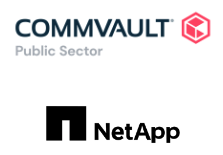Quick Quiz: Which of the following statements are true?
A. Cloud isn’t secure.
B. Cloud is prohibitively expensive.
C. You can’t move just a portion of your resources to the cloud.
D. Putting our data in the cloud means we’ll never be able to find it
The answer? They are all false. There are many misconceptions about the cloud today, and federal agencies aren’t immune from them. Yet despite these untruths, agencies are still adopting the cloud aggressively because of the benefits it provides. According to a recent survey, about one third of federal agencies are currently using multiple cloud solutions, a relatively low number. Dispelling misconceptions is critical to increasing that number. In this report, we will highlight issues agencies should think about before committing to any type of cloud resource. The content is drawn, in part, from GovLoop’s recent virtual event, Myth Busters: Addressing Common Cloud Misconceptions, sponsored by Commvault, provider of data-focused products and services; and NetApp, which focuses on secure data storage.
Reality Check: Cloud Lessons Learned
The federal government has been bullish on cloud for several years, first mandating a policy known as Cloud First and then revising its strategy to Cloud Smart, which provided more guidance to help agencies better determine effective use cases for the cloud. At the same time, agencies have experimented on their own. Over the years, through trial and error, agencies have learned a lot about what works, what doesn’t and what needs to be changed to make the cloud work for them. Here are some of the biggest misconceptions and lessons learned in migrating and adjusting to the cloud.
Don’t Assume Cloud Is the Best Solution
While it’s tempting to consider the cloud a catch-all solution for improving processes and efficiencies, that’s simply not the case. In fact, anecdotal evidence indicates that more than half of what gets moved to the cloud eventually returns to systems on premises. In some cases, it’s a cost issue, and in others, it’s about mission effectiveness.
“To make sure you’re using the cloud in ways that make the most sense, start with the mission,” said Chief Warrant Officer 5 Matt McDougall, Senior Signal Warrant Officer for the U.S. Army’s 18th Airborne Corps at Fort Bragg, North Carolina. “Understand what processes are required, and what data needs to be where and then you can do the analysis based on your use cases, business model and business architecture.”
Technology comes second, agreed Richard Breakiron, Senior Director for Strategic Initiatives at Commvault. “Look at the business and figure out your problem – it might not even be a technological problem,” he said. “It could be a business process. I can remember many times when I was brought into a meeting at the Pentagon to solve a technical problem, but it turned out to be a business process that automation wouldn’t help.”
To make it easier, agencies might look for a cloud optimization tool, which can help them determine which are the best candidates for the cloud, and which might be more cost-efficient to keep on premises.
Take a Data-Centric Approach
Agencies understand that data is a strategic asset, but they often lose sight of that when making decisions about the cloud. But it is all about the data. In a nutshell, it’s about knowing where data is located, protecting it effectively and being able to access that data on demand to make decisions and conduct business.
To Breakiron, it’s a question of readiness.
“Readiness is a core mission; agencies need to be ready to respond to issues as they occur. And today, operational readiness means data readiness,” he said. The velocity, volume and variety of Reality Check: Cloud Lessons Learned 3 data that agencies must deal with today require extremely resilient platforms and partners that can meet requirements and adjust when requirements change.
Don’t Go it Alone
Cloud is a complex undertaking, and it’s easy to overlook issues in the process of migration if it’s not something you do for a living. So it makes sense to turn to people who make a living at it. But even then, it must be a collaborative effort.
That’s because cloud has a shared services responsibility model. While a cloud service provider will take responsibility for the underlying infrastructure, the agency is still responsible for such issues as data protection and compliance and business processes.
Breakiron compared it to going to a hotel on a business trip. Hotel management will ensure you have a desk and internet connectivity, but “they won’t tell you how to dress in the morning, or how to get ready for your business meeting.”
This article appears in our ebook, “4 Factors to Consider When Making the Jump to Cloud.” For more tips on implementing cloud, download the resource.
Photo by Magda Ehlers at pexels.com






Leave a Reply
You must be logged in to post a comment.